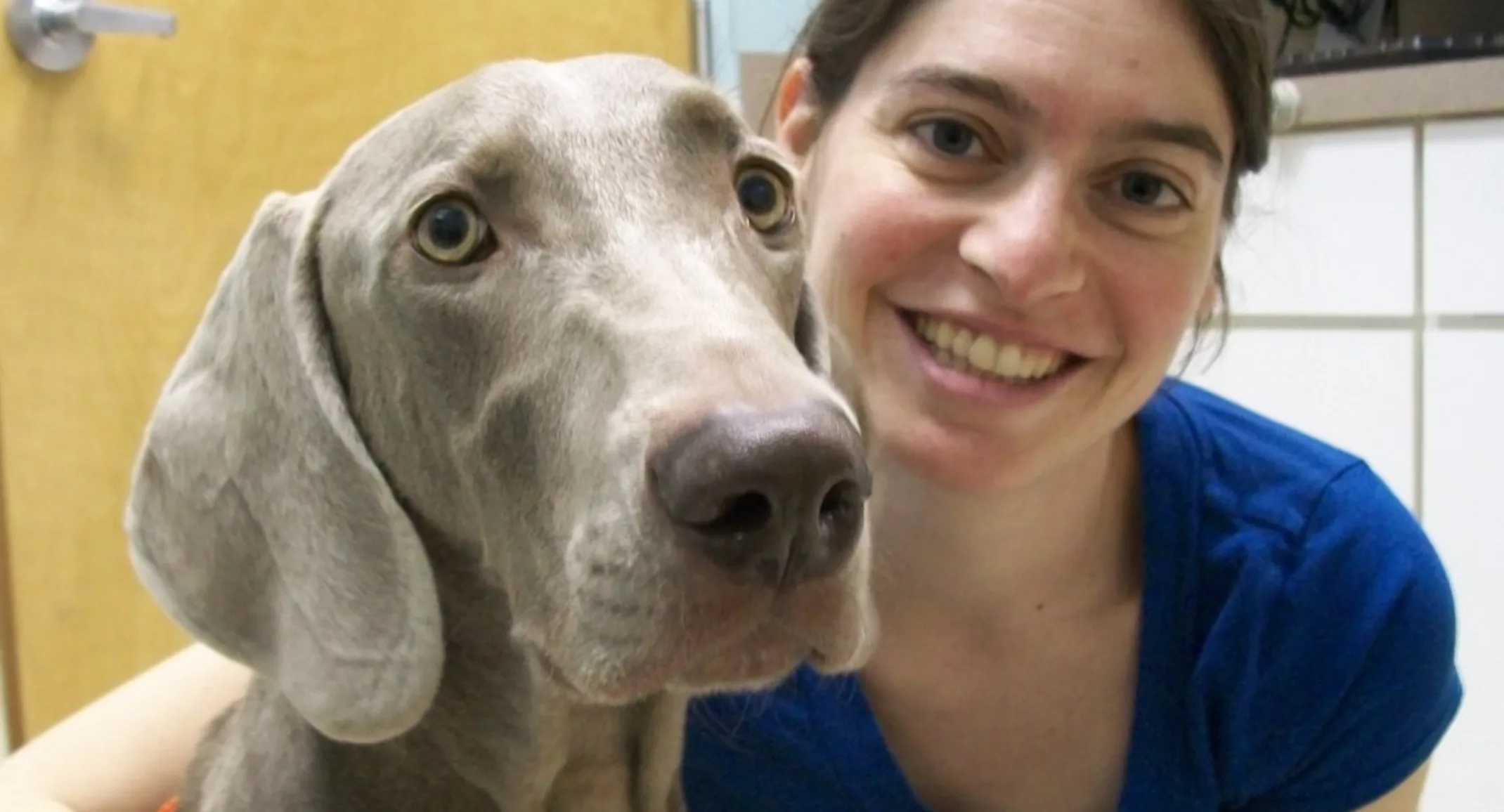Hobbes
2016

Hobbes is a 2-year-old Weimaraner who presented to our Springfield location in August 2010. Cerebrospinal fluid analysis (CSF) revealed severe neutrophilic pleocytosis and treatment with antibiotics and immunosuppressive doses of steroids were initiated.
History
Episodes of fever (104-105), not eating, unwilling to move, intermittent lameness that would last for 10-14 days and resolve while on Rimadyl. A neurologist from a different institution had examined him already and not found any specific deficits.
Examination Abnormalities and Localization
Neck pain appreciated by reduced range of motion in all directions as well as discomfort demonstrated during lumbosacral palpation. Due to the presence of fever, inflammatory or infectious disease of the meninges or the bone/muscle/nerve of the spinal column was considered most likely. More specifically, we considered steroid-responsive meningitis arteritis, bacterial or fungal diskospondylitis, GME, or infectious meningomyelitis to be highly likely.
Diagnostics
Radiographs of Hobbes’s cervical and lumbosacral spine were normal and showed no signs of diskospondylitis. Hobbes was placed under general anesthesia and a spinal tap was performed.
Hobbes’s CSF showed a severe neutrophilic pleocytosis (elevated neutrophils in the CSF) and an elevated protein. These findings as well as Hobbes’s signalment were consistent with sterile meningitis, also known as steroid-responsive meningitis arteritis. However, infection could not be ruled-out so Hobbes was started on doxycycline, clindamycin and immunosuppressive doses of corticosteroids.
Diagnosis
Cerebrospinal fluid bacterial culture, toxoplasma/neospora and a PCR tick panel were found to be normal, as a result antibiotics were later discontinued. The C-reactive protein (CRP) was markedly elevated at 60 mg/dL. These findings, coupled with his signalment, history and response to medications (see below), provided for a diagnosis of steroid-responsive meningitis arteritis (SRMA).
Treatment
On recheck examination one month later, Hobbes was pain free, afebrile and back to his normal self at home. A follow-up C-reactive protein was submitted and was normal at 0.1 mg/dL. Hobbes was continued on his tapering course of steroids and received a total of 8 weeks of therapy. He later relapsed based on examination and an elevated CRP and is now well controlled on cyclosporine.
Take Home Points
In a large breed and young dog (typically 8 months of age or older) exhibiting a waxing and waning fever, examine for neck pain and be highly suspicious of SRMA. The Boxer, Bernese Mountain Dog, Great Pyrenese and Newfoundland are at a particularly high risk.
Elevated neutrophils in the CSF (neutrophilic pleocytosis) are common in autoimmune and infectious conditions of the spinal cord. Infectious disease testing and a trial with antibiotics are recommended under these conditions.
C-reactive protein (CRP) is a marker of inflammation and is typically elevated in dogs with SRMA. This is a very useful test for assisting in the diagnosis of SRMA and documenting relapse of this condition.
In addition to prednisone, immune-modulating drugs like cyclosporine, azathioprine, leflunomide or mycophenolate can also be effective in the treatment of SRMA.
To discuss this case or to ask a question related to this case please email Dr. Neary. This case was referred by Dr. Tracy Appelbaum of Rocky Gorge Animal Hospital Resort & Spa. Hobbes was seen by Dr. Tiches and Dr. Neary.
